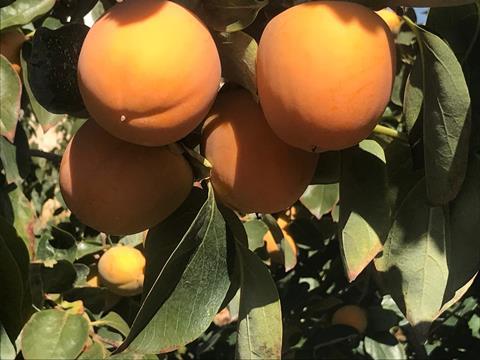Hopes are high that reduced acreage and ongoing marketing efforts will restore profitability to the battered sector

Spain’s persimmon industry has had a bumpy ride over the past few years. Following a period of significant growth between 2011 and 2018, low prices, a series of adverse climatic events and rising pest problems have made life increasingly difficult for farmers, leading to a notable contraction in planted area.
According to Pascual Prats, president of the Association of Spanish Persimmon Producers, acreage has shrunk from a peak of 18,500ha five years ago to 14,000ha today. “We’re talking about a decrease of 20-30 per cent, which naturally reduces the country’s productive potential, so the days of 500,000 tonne harvests have long gone,” he tells Fruitnet.
Prats puts the contraction down to several reasons. “It’s true that many groves have been abandoned due to a lack of profitability, but a far bigger reason is the cost and difficulty of combating the growing incidence of pests such as cotonet and white fly and mycosphaerella,” he explains.
The situation is especially acute in Valencia, home to around 90 per cent of Spain’s persimmon acreage, because smallholdings make up the bulk of production.
“Moreover, as we’ve seen with other crops like citrus, the next generation is becoming less interested in taking over farms from their parents when these reach retirement age, which accelerates the abandonment of farms,” he says.
Fortunately, the outlook for the coming season is extremely bright and barring any unforeseen climatic events, volumes should reach 320,000-340,000 tonnes. “The quality right now is excellent. The spring rains led to good blossoming and we’re seeing decent calibres,” says Prats. “But pests remain a problem – we simply don’t have enough active materials to deal with them and the cost of treating outbreaks pushes up production costs significantly.”
The volume of fruit sold under the Persimon label – the trademarked name for the PDO-certified Rojo Brillante persimmon grown in the Ribera del Xúquer valley – provides a further illustration of the ups and downs the industry has been subjected to. It ranges from a high of 115,000 tonnes in 2019 to just 55,000 tonnes in 2022. Last year, some 65,000 tonnes of persimmon was sold under the label.
According to Rafael Perucho, head of the Kaki de la Ribera regulatory council, which is responsible for marketing the fruit under its trademarked Persimon brand, these fluctuations have impeded efforts to gain traction in the market for what is still a relatively little-known product.
“This is one of the major problems we have been experiencing in recent years – you never want to tell a customer that you can’t supply the product they need. We’re talking about a product that’s still largely unknown, so not being able to meet the minimum volumes customers require is a problem for the entire sector, for our customers, and for consumers who, while familiar with the product and expect it, find themselves unable to find it in their usual points of purchase,” he tells Fruitnet.
Rojo Brillante persimmons are highly prized for its sweet, vanilla-like flavour and firm, crisp texture when ripe. It has a relatively short production window, with fruit typically available on supermarket shelves from mid-October to January, and the season is usually supported with an intense marketing campaign in key markets.
This year, promotions will be carried out in Canada, the US and Brazil, as well as in Europe. They will feature the new Persimon brand image launched in 2024 – initially in Spain before being rolled out in other markets.
Perucho is understandably reluctant to look ahead to what’s in store for the 2025/26 season. “Given the experience of recent years, it’s becoming increasingly difficult to make accurate forecasts about the forthcoming season. In principle, production has developed normally so far, but based on the experience of recent years, the coming months could significantly impact the campaign, both in terms of weather and pests, so we’re going to be cautious for now,” he says.
What is clear, however, is that the impact of last year’s Dana continues to be felt. Persimmons were one of the worst-affected crops in the devastating floods that struck the Valencia region last October. According to Perucho, many fields suffered extensive damage and there are areas where infrastructure such as roads and irrigation still need to be addressed. As a result, the forecast for 2025/26 will be lower than normal.
Despite the climatic challenges and increasing incidence of pests denting the profitability of the persimmon production in Spain, Perucho is optimistic about the PDO’s future.
“Our goal as the Regulatory Council has always been to make the crop a profitable alternative for our growers, and we are working toward that goal to help open and gain market share, and above all, to promote a relatively little-known product, but the weather is making things difficult for us,” he says.
Looking ahead, Prats predicts there will be a further fall in acreage over the next couple of years until the situation stabilises. “On the plus side, this means that supply will be more aligned to market demand, which should mean better prices for farmers,” he says. “This is vital as costs continue to rise and farmers are having to become increasingly professionalised.”



